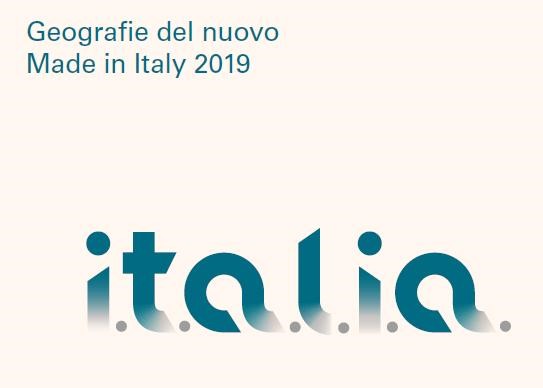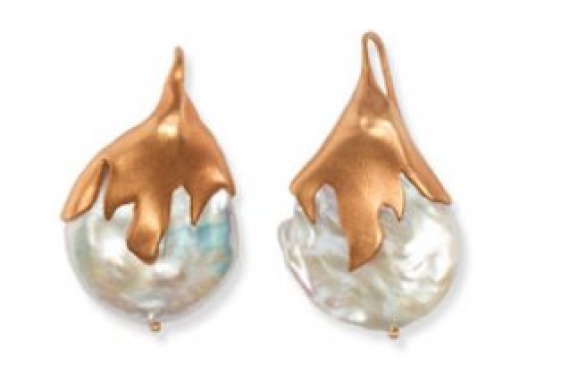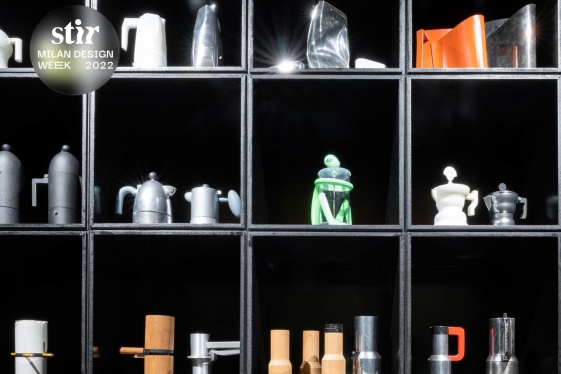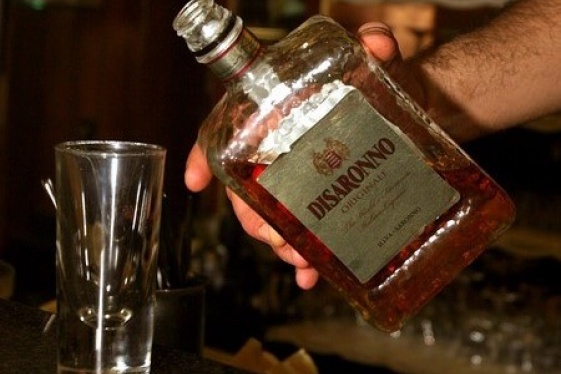

In these first years of the millennium, when fake news (real or presumed) have become one of the hot topics of the public debate, Italy also pays its price, mainly because of the lack of awareness and lack of pride. The good news about the country, and in particular the results achieved on a global range, have never been very well known at home. But today, in addition to this lack of awareness, there is also a lack of confidence in the country that fuels doubts about those results.
Let's take a few examples. Italy is among the top 10 countries in the world for investment in research and development: only 13% of Italians are aware of this, and almost one in two (45%) does not believe this news, in short, considers it a fake news. We are the first European country to recycle waste with 76.9% of the total of waste produced: but only one Italian in 10 knows and even 51% believe this news is not credible.
In short, the theme of awareness is joined by that of trust. Yet abroad the demand for Italy is growing, as shown by a Google survey, also carried out for this report. The number of searches on Google related to the made in Italy and the keywords related to it - a key indicator of the reputation and desire of Italian products in the world - grew by 56% between 2015 and 2018. Four years ago, a similar survey found a significant increase (+22%) but not so high. And this is only the world average: there are countries such as Brazil, India, Portugal and the United States for which the traffic of research related to Made in Italy is growing even more markedly. Another confirmation is the fact that, on a worldwide scale, after English, Spanish and Chinese, Italian is the fourth most studied language, before French.
Italy is, in many fields and despite the common perception, a superpower: of manufacturing (we are one of the top 5 countries in the world for trade surplus with foreign countries), of circular economy (European champion in waste recycling), of agro-food (first in Europe for added value, among the world leaders in organic farming), of creativity (first among the large EU countries for the number of design companies), of tourism (second EU country for overnight stays of non-European tourists).
Awareness of our strengths and confidence in our best energies are the first step in addressing and solving the country's problems. Not only the public debt but also the social inequalities, the black economy, the criminal economy, the delay of the South, an ineffective and often suffocating bureaucracy. From there - from awareness and talent, identity and pride - we must start to counteract the many problems inherited and deal with those to come.
I.T.A.L.I.A., the biennial report, now in its fourth edition, produced by Symbola Foundation, Unioncamere and Edison Foundation, was created to look at Italy in the eye and tell the many strengths. Using the name of our country as an acronym for the new Made in Italy - from Industry to Tourism, from Agrifood to Localism, from Innovation to Art and Culture - the report offers a picture of the many talents of our country and the extraordinary results that, despite everything, they have stubbornly obtained.
Let's take a look at some of them, immediately pointing out that, in all the areas observed, Italy's figure is quality, innovation that starts from traditions, territories and communities that, together with the care of human capital, culture and beauty, are an active part in the creation of value, including economic value. In a word, the soft economy: "a sweet and immaterial economy, based on knowledge, on the enhancement of the identity of communities and territories and on respect for the environment", as defined in the Treccani dictionary of neologisms.
Research
Let's start with research, an area in which our country does not enjoy great credit in public opinion. Despite the need to invest more, Italy is among the top ten countries in the world for investment in research and development. Using the number of scientific publications as a proxy for the entire scientific production of a research system, Italy, although not recording absolute values of first order, shows a good vitality, as evidenced by the growth of 8.3% (2000-2016, last available data), against a world average of 5.7%. Together with Spain and China, we are among those who have seen their share of research in the world total increase. But the most important fact, as reported, is quality. If our researches are not very numerous, they are however of value, as demonstrated by the number of average citations of those made in Italy. Italy, starting in 2000 from a rather low value (1.01 average quotations, the last among the large EU countries), showed a growth of up to 1.35 quotations, which brings it to second place in the world behind only the United Kingdom, and also ahead of China, USA, Japan, Germany.
From research to business innovation
In the European Union, Italy is second in number of innovative companies (38,361) behind Germany alone (41,793). According to the International Federation of Robotics, our peninsula holds an important sixth place in the world for the total stock of robots installed (64,356 units in 2017, last year available), preceded by China, Japan, South Korea, the United States and Germany. In this field we also have a cultural record: robotics, a discipline that studies the ethical, social, humanitarian and ecological aspects of robotics, starts from the "First International Symposium on Robotics", organized in 2004 in Sanremo by the School of Robotics. New, more sustainable, more beautiful, practical and innovative products often come from design, which is a trademark of Made in Italy. Of the 192,446 European design companies, almost one in six speak Italian: 30,828 companies that place Italy ahead of the other major European countries - France (27,689), Germany (26,307), the United Kingdom (22,731) and Spain (5,543).
The innovation of our companies, which is often difficult to measure, can be assessed by their results. Like those that have made Italy a European protagonist of the circular economy. With 307 tonnes of raw material per million euros produced by our companies, we are second in the EU for efficient use of material, behind the UK (236 tonnes), favoured by a strongly financial services-oriented economy. Behind Italy, we find France (326), Spain (360) and Germany (408).
Italy, with 76.9%, is the European country with the highest percentage of recycling of all waste, more than double the EU average (36%). With 18.5% of the total material consumption of companies, we are also first among the major European countries for the circularity rate of the economy. A reuse of matter that leads to savings of 21 million tonnes of oil equivalent and 58 million tonnes of CO2. In addition to these results, there is another European record linked to the dematerialisation of the economy: every kg of resource consumed generates 4 euros of GDP, against an EU average of 2.24 euros and a German figure of 2.3 euros. All these data speak of environmental sustainability but also of economic efficiency, production and innovation. A picture destined to improve further, considering the more than 345,000 Italian companies in industry and services that have invested in 2014-2018 in green products and technologies.
These characteristics, together with the flexibility and sartorial vocation of the companies (knowing how to modify their products and services based on the needs of customers) and the great and deep-rooted production capacity, make Italy one of the European and world leaders in manufacturing. With a $106.9 billion surplus, in fact, we are among the top 5 countries in the world for manufacturing assets, behind China, Germany, South Korea and Japan. This is thanks to a productive fabric made up mainly of small and medium-sized enterprises. Our country has the highest number of exporting manufacturing SMEs in the OECD area. Analyzing this point in more detail and limiting ourselves to the European picture, Italian SMEs are first in terms of exports (also in front of large companies) in textiles, clothing, leather-footwear and furniture; second in non-metallic mineral-based products, metal products and mechanical machinery and equipment; third in rubber and plastic products; fourth in metals, electrical equipment and other manufacturing sectors. Our SMEs therefore also play a very obvious role in areas other than traditional fashion and furniture, in which Italy is a leader.
The index of competitive excellence in international trade developed by the Edison Foundation - which shows the number of products, out of a total of 5,206, in which each country is first, second or third in the world for foreign trade surplus - tells us that in 2017 (the last year for which full statistics are available) there were 922 products in which Italy is at the top of the world for trade surplus (first in 240 products, second in 380, third in 302).
From industry to agriculture
Italy, with 32.2 billion, is ahead of all European countries in terms of added value generated, almost a fifth of that of the entire agricultural system of the European Union. The Italian agriculture is the least subsidized among those of the large EU countries: contributions to production, both national and European, in Italy, amount to 4.9 billion, 7.8 billion in France, 6.8 billion in Germany, 5.8 in Spain. Our agriculture and our agri-food system are among the most competitive in the world: according to the index of competitive excellence in international trade of the Edison Foundation, in 2017, out of a total of 798 agri-food products worldwide, Italy was on the podium in 80 cases, that is, for one product in ten. Our country is a leader in the world wine market, with about one fifth in terms of production, exports in volume and exports in value. Because, once again, our figure is quality, as evidenced by the largest number of European Union awards for agri-food specialties, and especially for wines. More than one certified product out of 4 is Italian (one food item out of 5 and one wine out of 3). There are 299 Italian food products with designations of origin and geographical indications, 167 of which are PDO and 130 PGI, to which 2 TSG are added. In the wine sector, Italy has 526 awards, of which 408 DOP and 118 IGT.
Even in agriculture, it is environmental sustainability that guides the processes of qualitative evolution of our country, second in Europe and sixth in the world for area dedicated to organic farming. On the other hand, we are unrivalled in Europe in terms of the number of organic producers: 67,000, more than twice as many as the Germans (30,000), almost twice as many as the Spaniards (38,000) and 10,000 more than France (37,000). In terms of food safety, we are in the lead, with the lowest number of food products with chemical residues above the legal limits (1.9%); less than half of the EU average (3.8%) and most of the large European countries (3.2% of Spain, 3.8% of Germany, 4.3% of Great Britain and 6.4% of France). Quality, sustainability and competitiveness, as shown by the statistical picture just reported, increasingly go hand in hand, and our production system seems to have understood it before others.
Tourism
We are a great tourist hub: with our total of 5 million beds in all accommodations, we are second behind France, which has 5.1 million. However, the French tourist offer is mainly based on camping areas (2.8 million), leaving Italy with a leading position in the European Union as regards beds in hotels: 2.3 million, 16.3% of the entire EU hotel offer. A vocation for hospitality confirmed this year by tourists from outside Europe: in 2017 Italy was the second country in the European Union for the number of nights spent by tourists from outside the EU, with 65.2 million nights (+8.5% trend), behind the United Kingdom which has 130 million (year 2016), but firmly ahead of Spain (52 million) and France (41.5 million).
These numbers are linked to the beauty of our landscapes, to the vocation to welcome (also made of food and wine) and to our enviable cultural heritage. Italy is the first country by number of sites classified by UNESCO in the list of world cultural heritage: 54, ahead of China (53), Spain (47), France (44) and Germany (44). There are 4,889 museums and similar institutions, public and private, open to the public in 2017: of these, 4,026 are museums, galleries or collections, 293 archaeological areas and parks and 570 monuments and monumental complexes. A vocation for culture that becomes an economy and that also contaminates other sectors, such as manufacturing. There are 416,080 Italian companies in the Italian Cultural and Creative Production System, corresponding to 6.8% of the total number of companies. To these, together with a component of public and non-profit origin, we owe 6.1% of the Italian added value, over 95.8 billion euros, and 1.55 million employees (6.1% of the total). But culture, as we have said, also has an effect on the context, thanks to a multiplier effect, equal to 1.8, on the rest of the economy: for every euro produced by culture 1.8 is activated in other sectors. The 95.8 billion, therefore, 'stimulate' another 169.6 to reach 265.4 billion produced by the entire cultural chain, 16.9% of the national added value, with tourism as the first beneficiary of this effect flywheel. This competitive effect is also confirmed by the fact that the geographical areas with the highest cultural turnover are also those with a strong manufacturing vocation.
What we just described, in more detail in the complete paper, is a country whose competitiveness also lies in the contamination between economic value and social value, in relationality, in participatory dynamics and in the culture of citizenship, in the increasing number of social enterprises, in which the long tradition of cooperation is now joined by new subjects, such as benefit corporations and social startups. The key to the civil economy itself tends to widen its influence, and the growing sensitivity of citizens through "voting with their wallets" pushes them from the bottom towards a more humane economy.
The extraordinary results mentioned are obtained thanks to people, companies and associations that cultivate tradition without being afraid to innovate, interweaving creativity, culture, research and sustainability. They help to make Italy a country that can become a protagonist of the future and of the most ambitious challenges, starting from the climate crisis. This Italy must believe in itself and must bet on its many talents. And it must listen to the saying handed down in one of the sacred texts of Judaism, the Talmud: "We don't see things as they are, we see them as we are".
Marco Fortis, Deputy Chairman of the Edison Foundation
Ermete Realacci, President of Symbola Foundation
Carlo Sangalli, Chairman Unioncamere
You may be interested
-
Italian auto supplier Brembo to build new U....
Italian brakes maker Brembo will build a new foundry in Michigan to expand its manufacturi...
-
L'Arte del Gioiello Italiano - Lecture and T...
How has Italy influenced the world of Jewelry? Join us for a special lecture on the a...
-
'A small New York': Palm Beach to become home...
Miami-born and Italy-raised, jewelry designer and accomplished equestrian Lucrezia Buccell...
-
'Alessi 100-001' celebrates 100 years of Ales...
Iconic Italian design brand Alessi is celebrating its centennial with an exhibition titled...
-
'Be Italian' fa viaggiare l'America nell'Ital...
Conto alla rovescia per Be Italian, il nuovo salone organizzato da Lombardia Fiere dedicat...
-
'Call Me By Your Name' director Luca Guadagni...
Filmmaker Luca Guadagnino revealed in a recent interview that he has no immediate plans to...
-
'Entire' Italy spirits sector at risk from US...
The "entire" Italy spirits and liqueurs sector is at risk from US tariffs, wine and spirit...
-
'In the US you could never do this': How an A...
When life hands you grapes, you make wine. Writer John Henderson meets a Californian-Sicil...










